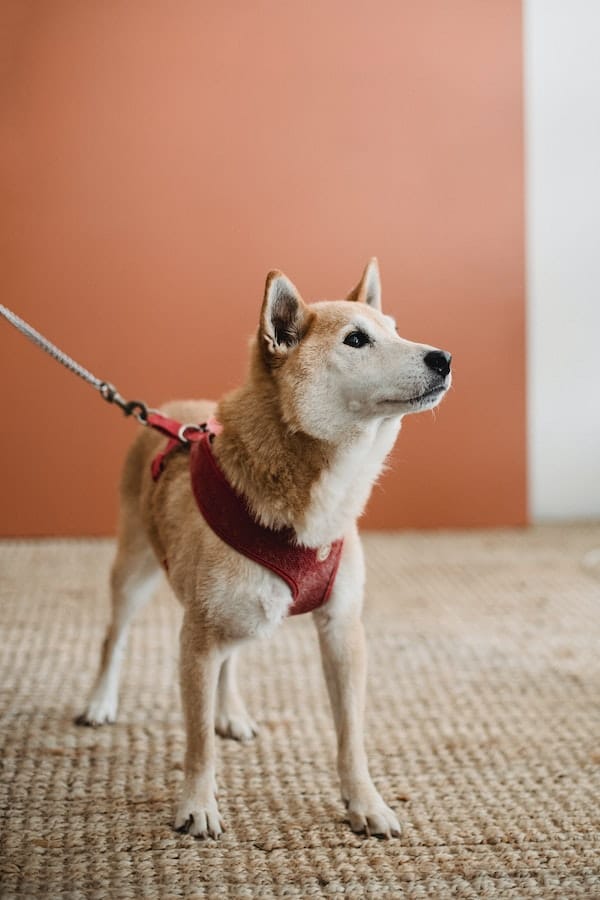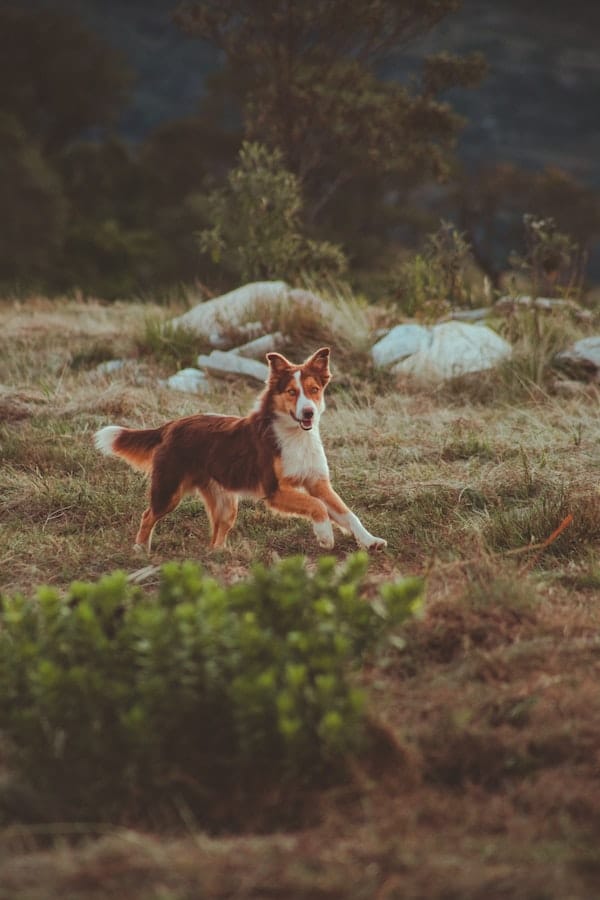
Welcoming a furry companion into your abode can be regarded as one of the most felicitous episodes in one’s life.
However, there exist some canines that exhibit reactive comportment, presenting distinctive challenges for their caretakers.
In the ensuing article, we shall delve into the realm of reactive dogs, furnishing a comprehensive comprehension of their demeanor, the reasons underpinning their reactivity, and effective techniques for training and tending, ensuring an amicable rapport with your four-legged friend.
What is a Reactive Dog?
A reactive dog pertains to a canine companion that manifests heightened responses to particular triggers, be it other dogs, strangers, loud noises, or unfamiliar surroundings.
These responses often exude intensity and may derive from feelings of fear, anxiety, or limited exposure to diverse social circumstances.
A perceptive grasp of the impetuses behind a dog’s reactivity proves crucial in managing and tending to their comportment with prudence and efficacy.
The Origins of Reactivity: Unraveling the Causes

Understanding the underlying causes of reactivity is essential in providing appropriate training and care for your canine companion. Some common origins of reactive behavior include:
Past negative experiences
A dog’s reactivity can be influenced by past negative experiences, such as traumatic encounters or distressing incidents.
These events may leave deep emotional impressions, causing the dog to respond defensively or aggressively when confronted with similar situations in the future.
Understanding their past can help us provide the support and guidance needed to help them overcome their reactive behavior.
Lack of socialization
Insufficient socialization during a dog’s critical developmental stages can be a significant factor in their reactivity.
Proper exposure to different stimuli and positive interactions with other animals and people play a vital role in shaping a dog’s behavior and confidence as they grow into adulthood.
Ensuring early socialization can help prevent or manage reactive tendencies, creating a well-adjusted and socially adept companion.
Fear and anxiety
Analogous to humans, dogs are susceptible to experiencing fear and anxiety, emotions that may ostensibly manifest as reactive behavior.
Discerning the particular triggers that evoke fear in a dog proves germane to the deployment of fitting training and desensitization methodologies.
By parsing and redressing the root causes of their fear and anxiety, we cultivate an environment where our canine companions experience augmented assurance, leading to diminished reactivity in manifold scenarios.
Recognizing Reactive Behavior: Signs and Cues
Being able to recognize reactive behavior in your dog is essential for early intervention and training. Some common signs of reactivity include:
Growling and barking
When a dog growls or barks excessively in response to certain stimuli, it’s often a sign that they feel threatened or uncomfortable.
These vocal expressions can be their way of communicating their unease or trying to create distance from the perceived threat.
As responsible pet owners, it’s crucial to pay attention to these cues and address the underlying causes of their distress to create a safe and supportive environment for our furry friends.
Snapping and lunging
Reactive dogs may resort to snapping or lunging when they perceive a threat or feel anxious.
These comportments serve as their means of expressing discomfort or seeking to shield themselves from a perceived peril.
In our capacity as pet owners, it behooves us to approach such junctures with empathy and sagacity, ensuring that our furry associates receive the requisite training and succor in coping with their emotions and reacting in a more constructive and controlled manner.
Raised hackles and tense body language
Upon observing a dog displaying raised hackles and taut body language, one deduces that the dog harbors a heightened state of vigilance and feels threatened or uneasy.
These corporeal cues function as an admonitory sign, signaling the dog’s readiness to repel any conceivable aggression if need be.
As conscientious pet owners or handlers, it is incumbent upon us to respect their boundaries and furnish them with adequate space, thereby engendering a climate wherein they feel secure and at ease.

Addressing Reactivity: Effective Training Techniques
Dealing with reactive behavior requires patience, consistency, and positive reinforcement. Here are some effective training techniques to help your dog become more comfortable and confident:
Counterconditioning
Counterconditioning is a training technique used to shift a dog’s negative emotional response to certain triggers into a positive one.
By pairing the trigger with something pleasurable, such as treats or playtime, we can help the dog create positive associations with the previously anxiety-inducing stimulus.
Over time, this approach can help them become more relaxed and less reactive when encountering the trigger.
Desensitization
Desensitization refers to a training method seeking to reduce a dog’s reactivity to specific triggers.
It entails incremental exposure to the trigger from a distance at which the dog remains tranquil and relaxed.
As the dog grows more at ease with the trigger, the proximity is gradually decreased, thereby enabling them to cultivate assurance and positive associations.
Building Trust: Strengthening the Human-Canine Bond
Indubitably, the consolidation of trust with one’s dog stands preeminent in any training regime. The following recommendations bolster the bond with your furry confidant:
Positive reinforcement
Positive reinforcement stands as an efficacious training technique wherein one rewards the dog’s desired comportments with treats, plaudits, or affection.
By commenting and bolstering these affirmative actions, one engenders a robust incentive for the dog to perpetuate such behavior.
This approach redounds not solely to the instruction of novel commands and feats but also fortifies the bond and reliance between master and companion.
Consistency and predictability
The semblance of consistency and predictability in one’s dog’s existence and training fosters their well-being.
By instating a routine that shuns abrupt changes, one forges an environment that embodies steadiness and security for one’s furry confidant.
Dogs thrive on the semblance of predictability, and when their expectations are met, this state of affairs mitigates anxiety and stress, fostering a jubilant and well-balanced pup.
Patience and understanding
The deployment of patience and understanding is pivotal when attending to one’s dog’s comportment and training.
Each dog is unique, and progress may fluctuate, hence it is imperative to exercise patience and avoid hastening the process.
Redressal of reactivity issues may prove onerous, but punishment is scarcely a panacea.
Instead, primacy is accorded to positive reinforcement and reward-based training methodologies, thereby engendering trust and promoting affirmative comportments.
Living with a Reactive Dog: Practical Tips
Residing with a reactive dog may engender hurdles, albeit the right approach ennobles the experience.
Presented hereunder are pragmatic pointers that foster a propitious milieu for your canine comrade:
Safe Spaces
Creating safe spaces within your home is essential for your dog’s well-being.
Designate quiet and comfortable areas where your furry friend can retreat when feeling stressed or overwhelmed.
These safe spaces should be free from any potential triggers and offer a sense of security.
Leash management
Leash management holds a pivotal import in safeguarding your dog and those in the proximate vicinity.
When venturing outside, ensure that your dog remains leashed to foster control and forestall any unexpected encounters with putative triggers.
This not only helps you guide your furry companion through various situations but also minimizes the risk of them reacting negatively to stimuli.
Avoidance
A salutary tactic in managing a reactive dog resides in the exercise of avoidance.
Identifying triggers that might precipitate reactive comportments and, whenever feasible, circumventing such situations, bestows upon your dog diminished stress and anxiety, thus heightening their overall contentment and enjoyment.

Conclusion
Fostering awareness concerning the genesis of canine reactivity and embracing an understanding of the factors underpinning their comportment remain intrinsic to the mantle of responsible pet guardianship.
Through the conscientious provision of patient, positive, and consistent training, you contribute to the flourishing and maturation of your four-legged confidant, endowing them with augmented self-assuredness and ease in manifold situations.
It stands to reason that each dog is a singular entity, and the guidance of a proficient trainer furnishes invaluable insights tailored to their unique requisites.
With dedication and empathy, the ties between master and canine flourish, engendering an environment wherein your cherished companion thrives in security and affection.
FAQs
While reactivity can be managed and improved, it may not completely disappear in some cases. Consistent training and support can significantly help, though.
No, punishment can worsen reactivity and lead to further behavioral issues. Positive reinforcement is a more effective approach.
Certain breeds may have a predisposition to reactive behavior, but it’s essential to remember that each dog is an individual.


GIPHY App Key not set. Please check settings